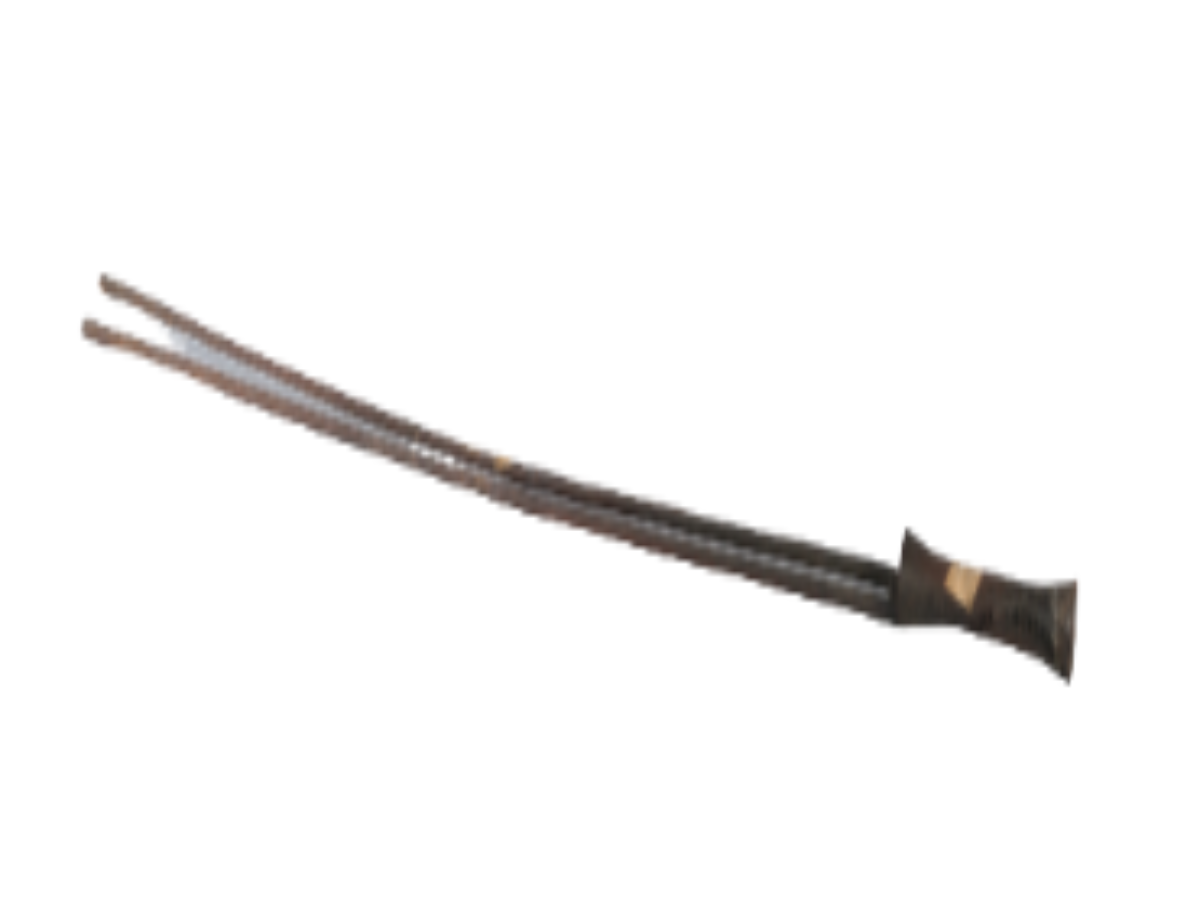State
Tribe Name
Art Type
short description
Known as Tarni, this threshing tool of the ancient Indian threshing method used by the Nagaland tribe to process their agricultural produce is artisan-made. It is designed for threshing Job's tear (Coix lacryma-jobi), a crop believed to be a millet-like grain and found widely in this area. Sometimes, it refers to a single block of wood in its name and consists of two long-thin wooden sticks joined in the center to a slender-elongated wooden handle. The tapering of the middle part of the handle is made for a good grip of the user. This type of ergonomics essentially helps a farmer swing and smack harvested stalks to thresh them.
Thumbnail

Filter Postion
Left
Filter Background
Off
Theme
Filter Header Image

content
Image

description
Known as Tarni, this threshing tool of the ancient Indian threshing method used by the Nagaland tribe to process their agricultural produce is artisan-made. It is designed for threshing Job's tear (Coix lacryma-jobi), a crop believed to be a millet-like grain and found widely in this area. Sometimes, it refers to a single block of wood in its name and consists of two long-thin wooden sticks joined in the center to a slender-elongated wooden handle. The tapering of the middle part of the handle is made for a good grip of the user. This type of ergonomics essentially helps a farmer swing and smack harvested stalks to thresh them.
This simple but very effective tool, expresses agricultural prowess by the people Naga and proves their eco-friendliness. This kind of tools finds a place of pride in the subversive food-growing traditions of Nagaland, where Jhum (shifting) cultivation and millet farming remain economic pinnacles. Naga tribes constitute Angami, Sema (Sumi), Ao, and Lotha. The tribes speak Sino-Tibetan languages, and are located in Nagaland and some Indian neighboring states in Northeast India. Their economy is an agricultural one; hence, every time this threshing stick is used, culture bore from one generation into another, making it symbolic for economic as well as cultural identity.
This simple but very effective tool, expresses agricultural prowess by the people Naga and proves their eco-friendliness. This kind of tools finds a place of pride in the subversive food-growing traditions of Nagaland, where Jhum (shifting) cultivation and millet farming remain economic pinnacles. Naga tribes constitute Angami, Sema (Sumi), Ao, and Lotha. The tribes speak Sino-Tibetan languages, and are located in Nagaland and some Indian neighboring states in Northeast India. Their economy is an agricultural one; hence, every time this threshing stick is used, culture bore from one generation into another, making it symbolic for economic as well as cultural identity.
Image Mode
landscape
promoted
On
Verified
Off
